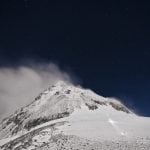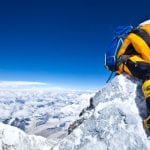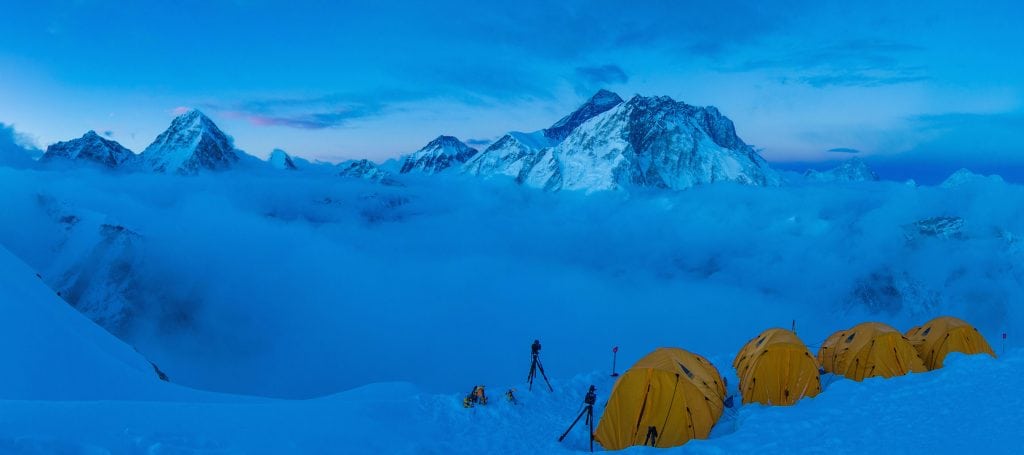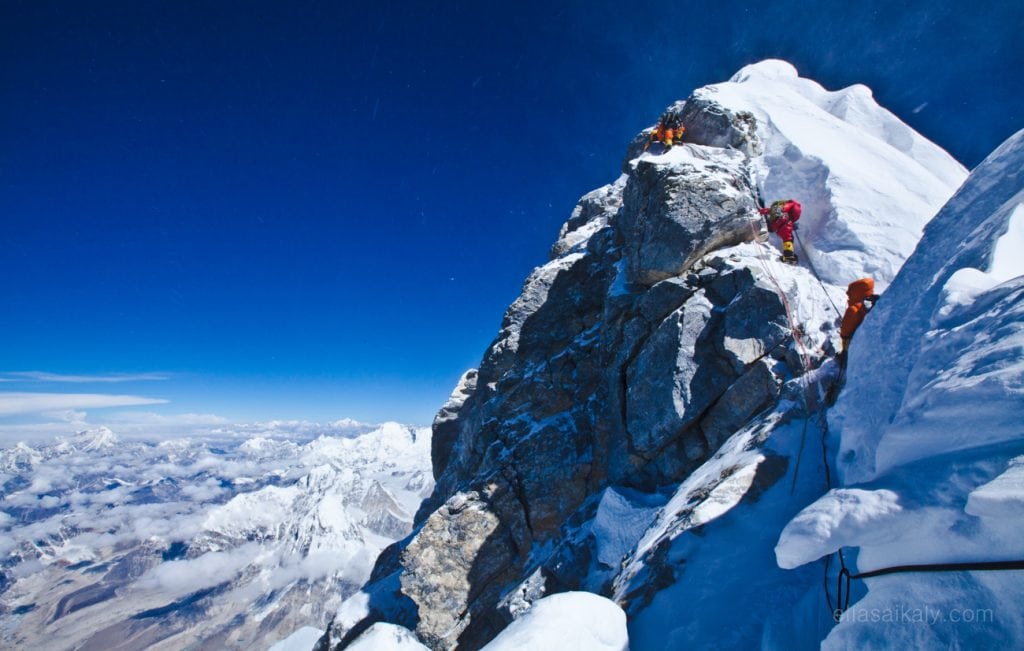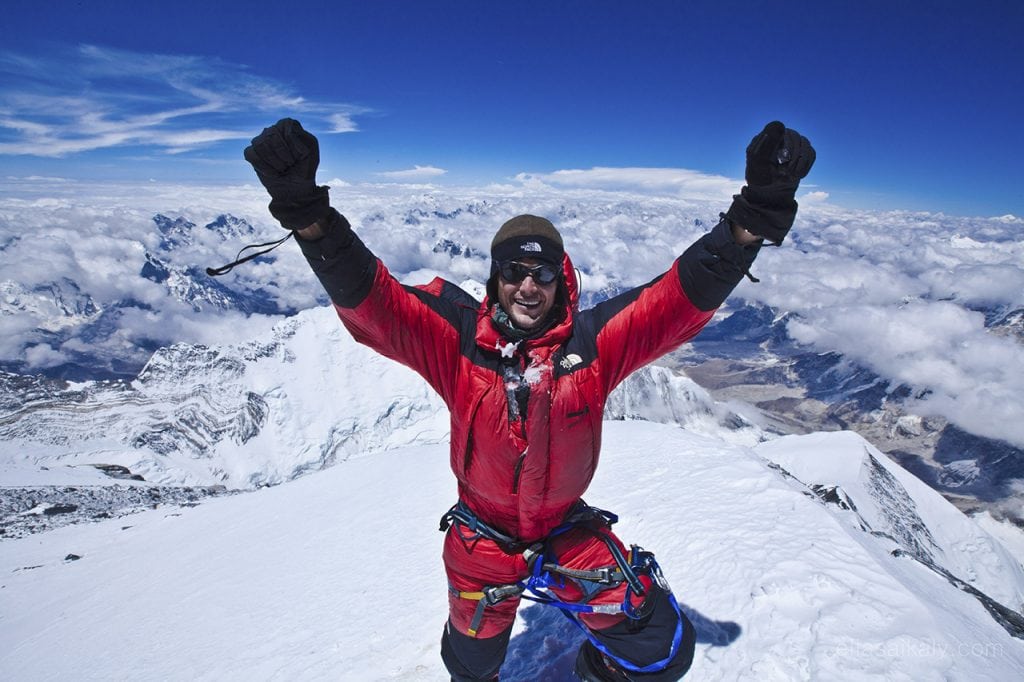Please note: This article was written in 2012 and was first published in the Huffington Post. The issues on Everest have evolved.
When it comes to Everest, It is easy for all of us to judge and make conclusions at sea level, but without substantial evidence and a true understanding of the environment above the death zone, it’s extremely difficult to make a fair analysis of the situation. The story of the Canadian climber who died — Shriya Shah-Klorfine — has evolved. It now appears as though she was advised to turn around several times by the local sherpas and that she went against their advice and carried on going beyond her limit.
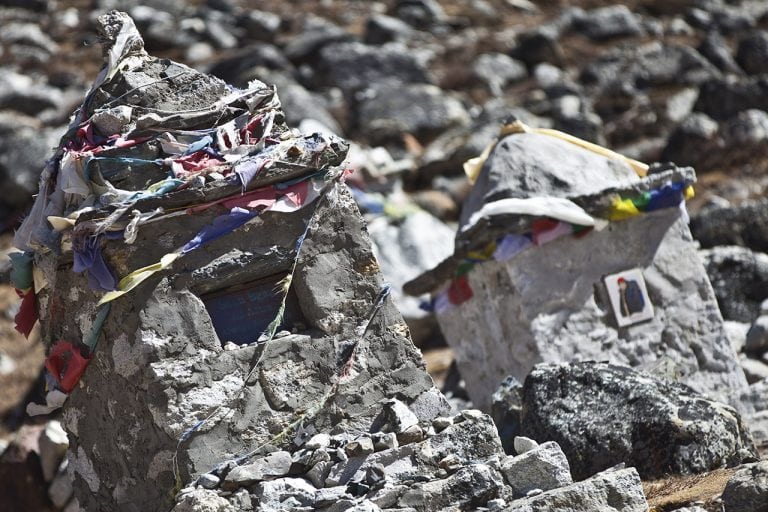
My perspective is that this type of decision making is no different than getting behind the wheel of a car, severely intoxicated and driving down a narrow road in a highly populated area. You are putting your life and everyone else’s life in serious danger. This is a situation that could have been avoided. Before continuing, I would like to offer my sincerest condolences to her loved ones for their loss. I in no way mean any disrespect to her family or loved ones and can attest to the heartbreaking feeling of losing someone you care about to the mountain.
The warning signs were there this year. On May 7, I re-posted a blog on my Facebook wall explaining that the most highly regarded expedition leader (Featured in Discovery Channel’s hit series Everest: Beyond the Limit) Russel Brice boldly cancelled his entire operation due to the hazards and dangers on the mountain. He said:
I had long and serious talks with the sherpas, the Icefall doctors and my guides and we have made the decision to cancel the expedition. We can no longer take the responsibility of sending you, the guides and the sherpas through the dangerous icefall and up the rock fall-ridden Lhotse Face.
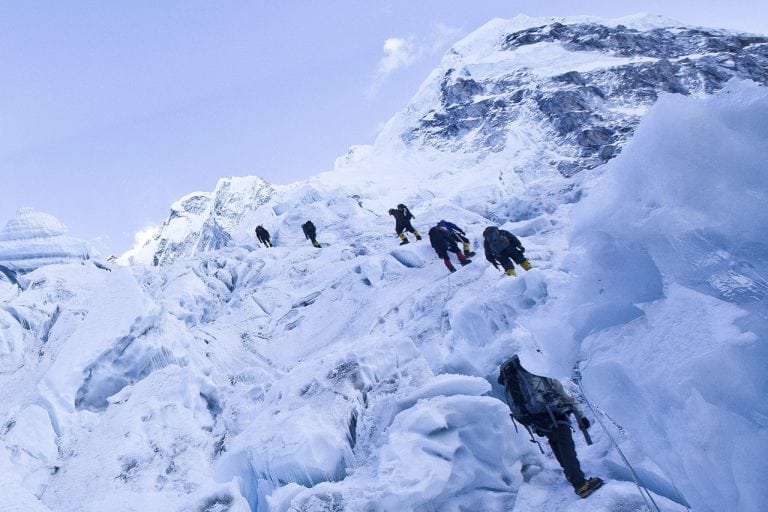
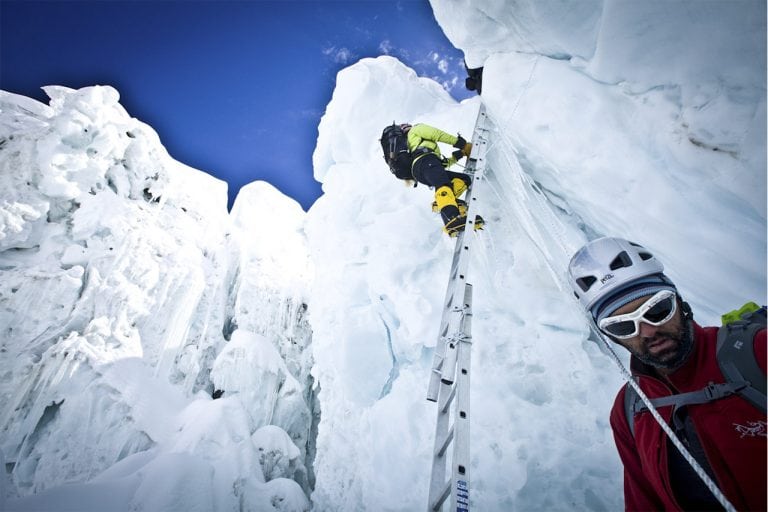
The most experienced and qualified expedition leader on the mountain had spoken. He sent dozens of climbers and sherpas home. In the end, his climbers, who invested more than $60,000 trusted his judgment and ultimately left with their lives.
I am alive today because I had the humility to accept defeat on Everest, not once, but twice. The first time, I was 26 years old, driven, focused, determined and in the best shape of my life. Not only was I climbing, I was documenting and shooting a film which multiplies the effort required by threefold. By 8:30 a.m., after 10 hours of climbing, I reached a point beneath the south summit where my climbing leader and trusted friend presented me with an option, one that no one prepared me for. He said, “We will summit if we carry on, but we will die upon descent because of the changing weather.”
I didn’t want to die on Everest.
After all, my organization is called FindingLife. Devastated and destroyed beyond comprehension, I accepted that Everest had made her decision. As painful as it was, with sponsors on the line and my own financial investment of more than $40,000, I accepted defeat and emerged with my life. In time I understood that failure on Everest was the greatest gift I had ever received.
In 2009, the second time I tried to climb Everest, I experienced the dark and vicious side of the mountain. People died during that climb. Vicious weather forced all teams to abandon their climbs. By the final week of May, our small three-man team was the last on Everest. We attempted the peak without Sherpa support. By 1 a.m. on June 2, 2009, I was the last man standing on Everest.
I opened up a trail using only my ice axe and crampons, searching desperately for the safety lines, attempting to create a path for my team to follow in a foot and a half of fresh snow. My sixth sense was guiding me and intuitively, I was able to carve a safe path up the unbroken trail at 8400M. Never, did I feel fatigued, tired or anything but powerful, willing and able. If there had been one single doubt in my health or abilities I would have turned back. By 2 a.m., I decided that once again, Everest had won. It was too dangerous to carry on. We emerged with our lives.
So why are people dying?
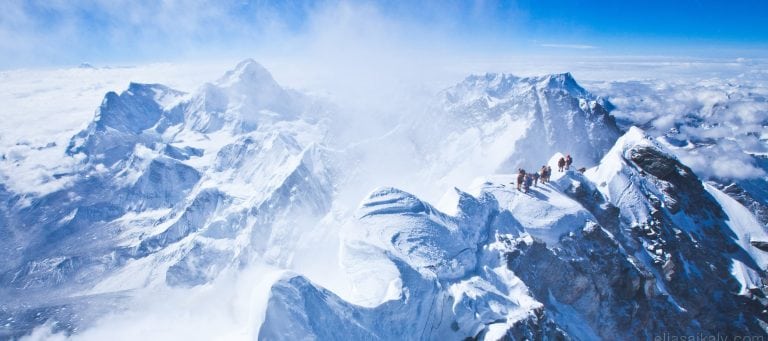 When I climb, I have two simple rules. Do not endanger yourself and do not endanger the lives of others, EVER. The rest is strategy, luck and science. I often say that what I fear the most while climbing are the objective dangers that we cannot control such as avalanches, rock fall, the weather and other climbers. All too often, I’ve seen climbers climbing when they really should have been turning around. I understand that some people are climbing Everest to push themselves beyond the limit, but in doing so, those climbers are putting everyone’s lives at risk including themselves.
When I climb, I have two simple rules. Do not endanger yourself and do not endanger the lives of others, EVER. The rest is strategy, luck and science. I often say that what I fear the most while climbing are the objective dangers that we cannot control such as avalanches, rock fall, the weather and other climbers. All too often, I’ve seen climbers climbing when they really should have been turning around. I understand that some people are climbing Everest to push themselves beyond the limit, but in doing so, those climbers are putting everyone’s lives at risk including themselves.
I recently read an article in the Ottawa Citizen about a local Ottawa woman climbing Everest, she tweeted the following:In the middle of the ice fall, my body suddenly crashed. Blood pressure plummeted. Started shaking all over and lost my eyesight. Thought I was done … Put my head between my legs, ate sugar, and resumed going up at the slowest pace on the mountain.
That’s like saying: “I was vomiting while driving because I was intoxicated, but I kept driving, slowly of course, to make it to the next offramp.”
Climbers who are getting themselves into trouble are simply not listening to the signs. What are you doing climbing when you’re experiencing those symptoms?
Altitude sickness isn’t just something that happens in an instant. The body sends us signals on the mountain, just as it does at sea level when we are not well. Headaches, nausea, irritation and insomnia are some of the early warning signs. Acute mountain sickness escalates if left untreated (descending to a lower altitude is the only solution) and can evolve into cerebral and pulmonary edema. From there, you enter into a coma and die shortly afterwards. With proper guidance, monitoring and/or experience, one can identify the onset of these symptoms and make responsible decisions about how to strategize and proceed.
According to a recent Globe and Mail article, the Canadian climber who died was advised numerous times to turn around. Just as I was advised my very first time climbing Everest. The trouble is, it sounds logical and easy to understand sitting here at sea level, but in a hypoxic environment when your brain is lacking oxygen and you’re unable to do simple math (try subtracting 20-10 + 3 x 2 at altitude) it’s nearly impossible to make logical and responsible decisions on your own.
What we see often on Everest are people who are masking or hiding their symptoms or worse, denying that they are not well. You’ve invested $60,000, trained for two years, sacrificed your personal life and put your pride and ego on the line… how could you possibly let a headache or a bit of insomnia stop you?
When I climbed in 2010, I was responsible for 20,000 Canadian students that were following my expedition via my website. Not only was I climbing, I was leading the expedition, shooting in HD, editing broadcast quality webisodes, video conferencing with students from as high as 22,000 feet, and carrying the ultimate responsibility of ensuring nothing went wrong.
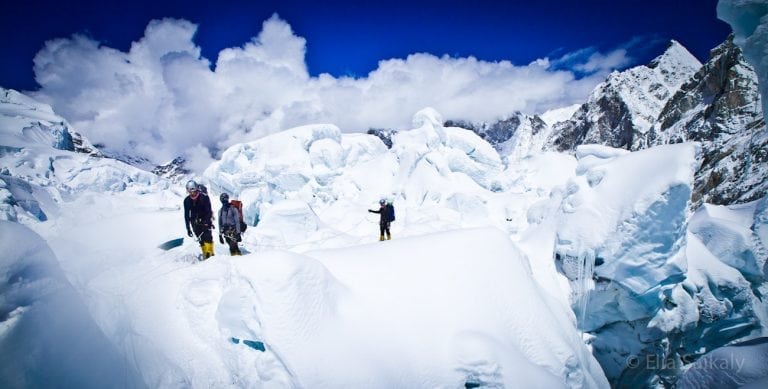 The first thing I did was plan to fail. After all, I had plenty of experience in that department! I implemented every safety strategy possible. I climbed with a doctor, I hired four incredibly strong Sherpas, and I had a support system including veteran summiteers helping with strategy. I even had a friend who mapped the weather and provided daily updates.
The first thing I did was plan to fail. After all, I had plenty of experience in that department! I implemented every safety strategy possible. I climbed with a doctor, I hired four incredibly strong Sherpas, and I had a support system including veteran summiteers helping with strategy. I even had a friend who mapped the weather and provided daily updates.
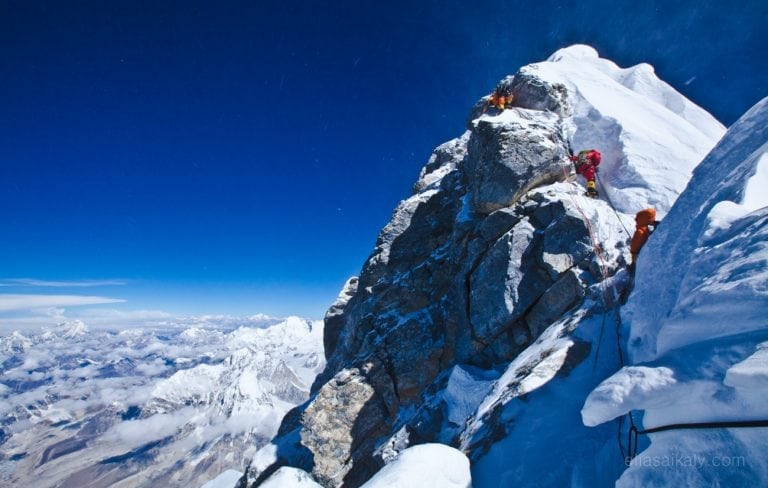 I also ensured I was fitter than anyone else on that mountain. On my summit night, I climbed faster than anyone else and reached the summit in less than six hours. If I had had a single symptom or health issue, I would have abandoned my climb.
I also ensured I was fitter than anyone else on that mountain. On my summit night, I climbed faster than anyone else and reached the summit in less than six hours. If I had had a single symptom or health issue, I would have abandoned my climb.
My heart sunk this morning as I read the following news in the Globe and Mail: They tried to get her to go back but [she] did not listen. She wanted to go to the summit anyhow. It took a very long time. It was 22 hours to go on top of Everest for her. On the way back down, she lost her energy.
Sadly, she ignored the advice of the people surrounding her who advised her to turn around. When climbing Everest, we are all aware of the rules, the turn-around times, the history of the unforgivable nature of Mt. Everest and the countless stories of climbers who have died on her flanks.
So who is responsible here? The Nepalese government? Her teammates? The logistics company? In my opinion, Shriya Shah-Klorfine was responsible for her own life. Had she turned around and listened to the signs, listened to other climbers including her teammates (who had her sign a contract ahead of time) monitored her body’s signals and accepted that she should have turned around, perhaps she would be alive today.
I am deeply saddened by her death and my heart does go out to her family. I can only hope that other novice climbers who are chasing their wildest dream to tempt the summit of Mt. Everest in the coming future learn to manage and minimize the risks, learn from history and approach the mountain with the utmost respect as the sherpa people of Nepal do and the way many professional and responsible climbers do year after year.
May 22, 2012, was the second anniversary of my successful and safe summit of Everest. The celebration was not that of a successful summit, but rather a successful return to my family and loved ones.
Climb safe everyone.
